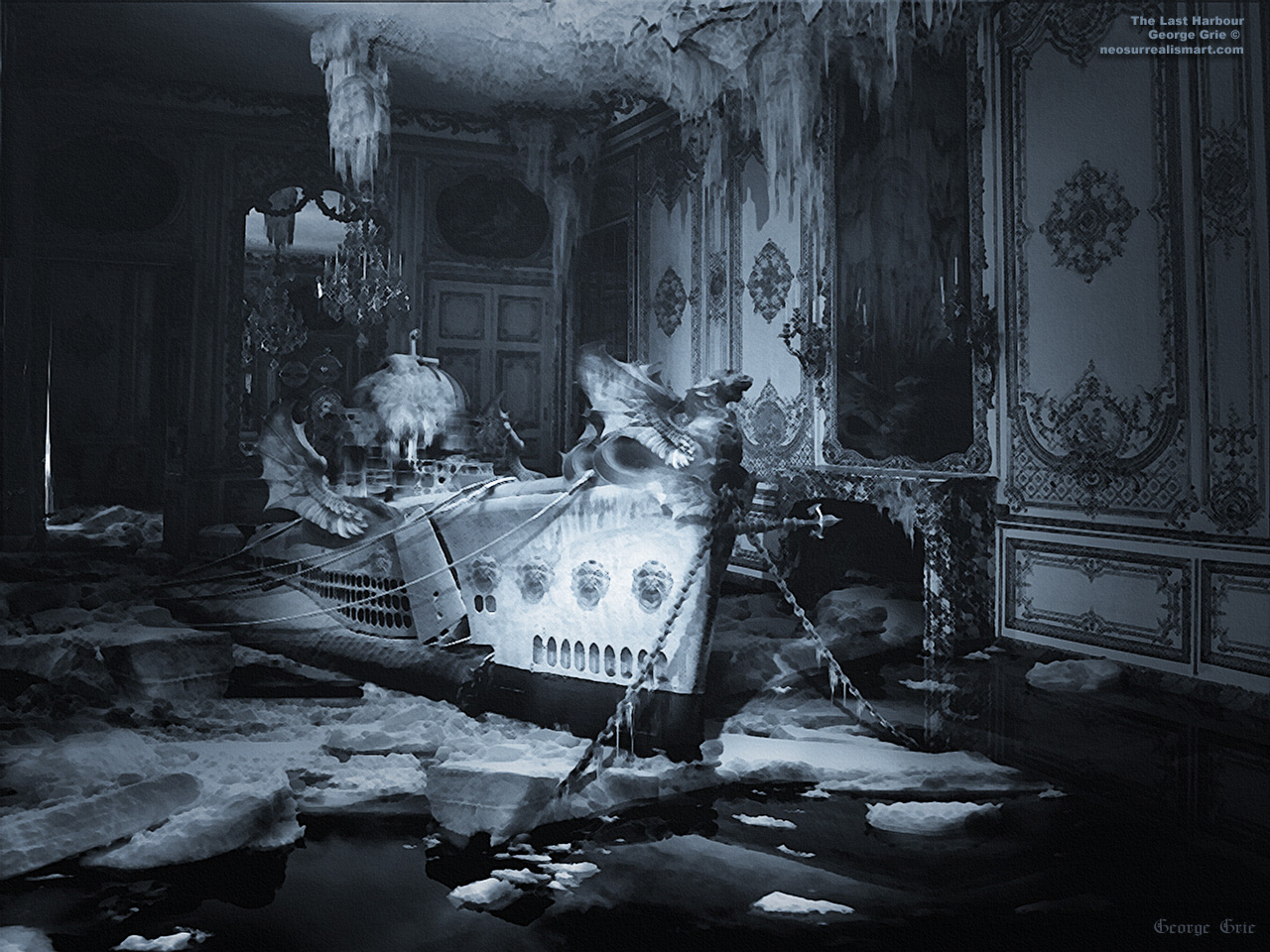

Last Harbor or In Search of Castaway Nautilus


In this image a 3D submarine model is blended into a number of photographs of the18th century interiors. The icing and the walls are matte painted photography combined with cave stalactites and stalagmites imaging. Last Harbour was inspired by remarkable Jules Verne’s novels such as “Twenty Thousand Leagues under the Sea”, “The Mysterious Island”, and “In Search of the Castaways”. The freezing suspense of Last Harbour is an invitation for a viewer to a world of fiction, mystery, and adventure. The image captures the loneliness of one’s last dwelling, the glamor and the decay of one’s glorious days. The dark waters beneath the snowy ice will take eventually the life and spirit of once fearful and intrepid apparatus with the owner inside to the long journey to history and to oblivion.
Nautilus Submarine by Jules Verne In the intricate storyline of Jules Verne’s adventures, the secret of the enigmatic island lies in the fact that it used to be Captain Nemo’s hideaway and a quiet harbour for his submarine – the Nautilus. As story has it, the Nautilus, after having escaped an engulfing maelstrom, continued sailing the oceans up to the point when Nemo remained the sole survivor on board. Only then the Nautilus headed to the mysterious island where it had been supposedly built. There are numerous acts of the Nautilus’s aggression against other marine vessels described by Verne in his novels. Most of those intentional incidents of destruction are believed by the readers to be directed against Great Britain, although Jules Verne never mentioned the name of the country which had persecuted Nemo and had subsequently become the object of his wrath. During an attack on a warship of the "accursed nation", as Verne puts it, Nemo makes revealing comments about his past life.
Verne predicted a lot of technical details pertaining to the submarines-to-be, such as the high speed of the vessels, swift manoeuvrability, poor detectable qualities, and the necessity for frequent surfacing for fresh air (in case with diesel submarines). The actual name for the submarine – the Nautilus, called after a kind of a mollusc with a chambered shell - was borrowed from one of the submarine prototypes built in 1800 by Robert Fulton, the inventor of the first commercial steamboat. Verne also envisioned not only the military possibilities of submarines, but particularly the danger which they presented for the surface warships of the British Navy. And the prophecy came true: the fictional sinking of a ship by the Nautilus was enacted and re-enacted in WWI and WWII in the same waters by German U-boats.
Software media: Adobe Photoshop, Adobe Illustrator, Autodesk 3ds Max, Photo Stock
George Grie, October 2005
Secret hideout harbor seaport dock, ancient submarine ship vessel, gargoyle renaissance classic fancy, ice water icicles stalactites cave, interior fireplace mysterious mystifying island surreal dark blue, architecture, fresco, art, detail, rococo, gold, painting, Renaissance, antique, area, bohemia, bohemian, building, cathedral, ceiling, east, europe, indoor, interior, light, location, old, paint, pillar, religious, saint, sculpture, st, style, wall,
Last Harbor or In Search of Castaway Nautilus
Last Harbor or In Search of Castaway Nautilus
Last Harbor or In Search of Castaway Nautilus